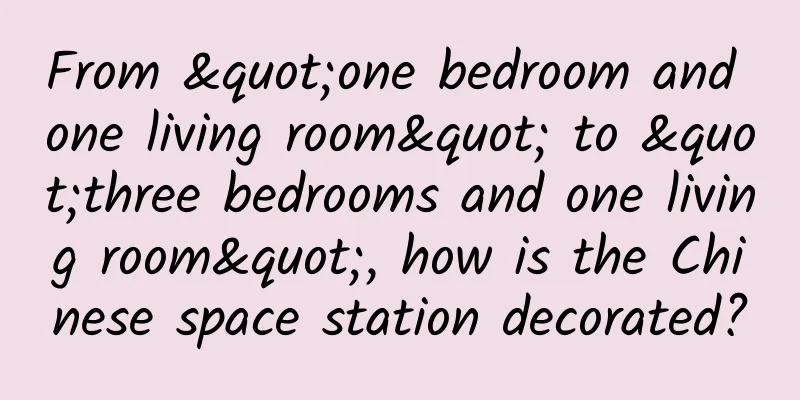"Algae Ceiling" Fridge Magnets Go Viral on the Internet, What is "Algae Ceiling"? Why is it so "magical"?

|
Recently, a refrigerator magnet in the shape of a caisson has become popular on the Internet. Although it is expensive, many netizens still complain that it is hard to get one. What is a "caisson"? How can it have such magic? This word, which sounds ancient and mysterious, is actually a unique and exquisite art form in ancient Chinese architecture. It is not only a part of the building, but also an important manifestation of Chinese traditional culture. Known as the most difficult to obtain refrigerator magnet in history (Image source: Xiaohongshu screenshot) 01 Caisson : A "skylight" from the top of an ancient crypt The history of caissons is long and can be traced back to ancient times. At that time, the ancestors in most parts of the north lived in underground caves, which were called "cave dwellings". In order to facilitate access and indoor lighting, people would open a small hole on the top of the cave, which was very similar to a skylight on the roof. This skylight allowed people to communicate with the outside of the cave and see the sky and stars from it. This is the origin of caissons. With the development of society and the advancement of technology, residences were gradually built above the ground, but some residences still retained this form of top opening. Because of its well-like shape and decorated with algae patterns, it is called caisson. Before the Han Dynasty, there were only written records of caisson, and no physical objects remained. In Zhang Heng's "Fu of Western Capital" in the Eastern Han Dynasty, it can be seen that caisson has basically taken shape and is a commonly used component in the palaces of the Han Dynasty. Ying Shao's "Customs and Customs" in the Eastern Han Dynasty said: "Now the palace is built with a skylight. The well is the image of the East Well; algae is something in the water, which is taken to suppress fire." It can be seen that caisson has appeared in palace architecture at the latest in the Han Dynasty. But the earliest caisson we can see now is the caisson on the Guanyin Pavilion of Dule Temple in Ji County, which was built in the Liao Dynasty in 984 AD. The evolution of caissons was from the Han Dynasty to the Wei, Jin, Southern and Northern Dynasties as the initial period, the Sui and Tang Dynasties as the development period, the Song and Yuan Dynasties as the finalization period, and the Ming and Qing Dynasties as the prosperous period. With the continuous improvement of social productivity, people's aesthetic concepts have been continuously enriched and improved, and the level of production technology has been continuously improved. The caisson has experienced a development process from practical building components to decorative building components, from simple to complex, from sparse to dense, and from single to diverse. In terms of content, due to the introduction of Buddhism in the Wei and Jin Dynasties, the figures and gods that were originally common in the caissons of the Han Dynasty gradually decreased, while the lotus, flying and various geometric figures common in Buddhism were widely adopted. During the Sui and Tang Dynasties, politics, economy, and culture developed unprecedentedly, and the feudal hierarchy concept led to the gradual strengthening of the awareness of architectural hierarchy. Only buildings of higher levels such as palaces were allowed to be decorated with caissons, and caisson decoration became exclusive to the royal family. The Tang Dynasty once issued a decree that "houses below the king and the princes were not allowed to re-arch the caisson", which was a manifestation of the hierarchy of feudal society, and has been followed by successive dynasties since then. 02 Caisson : A "well" with a complex structure The structure of the caisson is complex and delicate, and is generally composed of three parts: the wellhead, the brackets, and the dome. The wellhead is at the bottom of the entire caisson, the middle part is the brackets, and the dome is at the top. The wellhead is the outermost frame, usually round or square, defining the scope of the caisson, and is often made of wood. The wellheads are spliced together through mortise and tenon technology; the frame is carved with decorative patterns such as scroll patterns and volute patterns to increase its beauty. Dougong is an important supporting and decorative component, which is composed of dougong, gong, ang and other components stacked together to transfer the top weight to the wellhead and beam structure step by step. Dougong of different dynasties and architectural types vary in shape, size, number and arrangement. When making it, it is necessary to accurately calculate the size and angle, and carve patterns of flowers, figures, animals, etc., which have both structural and artistic functions. Some caissons do not use dougong, but use wooden boards stacked layer by layer, which looks beautiful and simple. Dougong model (Photo source: Xinhua News Agency video screenshot) The dome is located at the top of the center and is the core decorative area. Its shapes are often round or octagonal. The decorative techniques have evolved from simple painted patterns in the early days to later reliefs and inlays. In the Ming and Qing dynasties, domes often used wood-carved coiled dragons and phoenixes, and the artistic effect was enhanced by painting and gilding. The decorative theme was closely related to the function of the building and the identity of the user. There are many kinds of decorative patterns on caissons, including animals, plants, geometric figures, and figures. Lotus patterns are common and representative, symbolizing purity and auspiciousness; dragon and phoenix patterns are often used in royal buildings to reflect the supremacy of imperial power; geometric patterns such as square patterns and swastika patterns create a regular aesthetic; figure patterns are based on myths and legends, historical stories, and have educational and warning significance. Close-up of the caisson pattern (Photo source: Xinhua News Agency video screenshot) The production of caisson involves the collaboration of carpentry, carving, painting and other types of work. Carpenters build the frame to ensure stability, carving craftsmen present decorative patterns, and painting craftsmen add color effects to enhance the gorgeousness and artistic value. Each link must follow strict processes and standards to create exquisite caisson components. 03 Caisson : From "fire prevention" to "good looks" Caijing, also known as Qijing, Yuanquan, and Fuhai in ancient times. Most of these names are related to water. Most buildings in ancient China were made of wood, and fire was a huge threat. For this reason, the ancients built caissons on the top of the building and painted lotus, water chestnuts and various aquatic plants as decorations, taking the meaning of "water overcoming fire" and belonging to the method of "suppressing victory". However, this is just a good wish of the ancients. Caijing can neither supply water nor prevent fire. Later, craftsmen gradually discovered the decorative performance of caissons and continuously strengthened them. In the end, the decorative function of caissons far exceeded the function of "fire prevention". The ancients revered heaven and earth as the foundation of all things, and "heaven" became the greatest patron saint in people's hearts. Ancient philosophers advocated "harmony between man and nature" and reflected the respect for heaven and earth in architecture. People placed their awe and worship of celestial bodies and all things on the dome of indoor buildings to express their devout beliefs. The caisson, an architectural interior decoration that "rises high like an umbrella or a cover", became a symbol and imitation of heaven. Similar to the dome of a Western church, the caisson in Chinese architecture is also a microcosm of heaven. The caisson is also a symbol of the Chinese feudal hierarchy. The emperor needed to use external objects to interpret and set off his authority. Therefore, the caisson can only be used in buildings of higher levels. For example, the Panlong caisson in the Hall of Supreme Harmony in the Forbidden City is the pinnacle of ancient caisson art. This also puts extremely high demands on the production of caissons, so the production process of caissons has become more and more complicated and very particular. Ancient craftsmen only used mortise and tenon joints and brackets to present a complete caisson, which was complex but not messy, making the entire building magnificent and artistic. The caisson ceiling symbolizing imperial power (Photo source: Screenshot from Xinhua News Agency video) Conclusion Today, the artistic charm of caisson has not diminished with the passage of time. The popularity of caisson refrigerator magnets is a good example. This cultural phenomenon not only brings caisson into modern life, but also allows more people to understand the aesthetic and cultural value of this traditional architectural component. We can see the vitality and influence of traditional culture in modern society, which urges us to continue to explore and inherit these precious cultural heritages and let them shine with new brilliance in the new era. Author: Shi Ning is the executive director and deputy secretary-general of the China Lao She Research Association, director of the Dongcheng District Writers Association of Beijing, member of the Beijing History, Geography and Folklore Society, and volunteer guide at the Beijing Ancient Architecture Museum. Produced by: Science Popularization China |
<<: Beware! AI is beginning to undermine human safety training...
>>: Flu, parasites, cancer...you heard it right, dinosaurs can get sick too!
Recommend
2022 Taobao's full-system courses will trigger search and recommendation traffic, and new products will trigger search explosion
2022 Taobao's full-system courses will trigge...
Data Structure of Information Olympiad
Brief introduction to the data structure resource...
The core logic of Douyin's sales is enough to read this article
Content e-commerce has entered a very obvious exp...
Super Flash Hao Keming: Mobile Flash web games are in a new blue ocean era
This is an era of universal entertainment. The ex...
Foreign server rental price list, overseas server rental
Foreign server rental price list, overseas server...
Science: Breakthrough in sleep medicine: The brain consolidates positive emotions in dreams
Processing emotions, especially distinguishing da...
Baidu Encyclopedia has been with us for ten years. In the future, it will become the world's largest Chinese knowledge base.
More than ten years ago, if you wanted to know so...
Tesla is once again rumored to be building a factory in China and is accelerating its pace after meeting with the Vice Premier
According to foreign media reports, people famili...
What are the main functions and effects of Cordyceps sinensis? How to preserve Cordyceps sinensis?
Cordyceps sinensis Precautions for fresh Cordyceps...
Play user behavior path analysis, 3 methods are enough
This article will introduce three commonly used a...
OPPO Chip Manufacturing: Long-term and Short-term Concerns on the Edge of Top 5
The phrase "be Chinese people's own XXX&...
Where is the Changsha Tea Tasting Club? High-end part-time takeaway
Contact us for tea at home: 185-6916-1745 WeChat:...
"Super sweet potato" in the sand: although it is very earthy, it is a "smooth artifact"!
Want to find a cheap and easy-to-use "smooth...
Query the price of Artair Real Estate Mini Program agent. How much is the price of Artair Real Estate Mini Program agent?
How much does the Ateler Property Agency Mini Pro...









